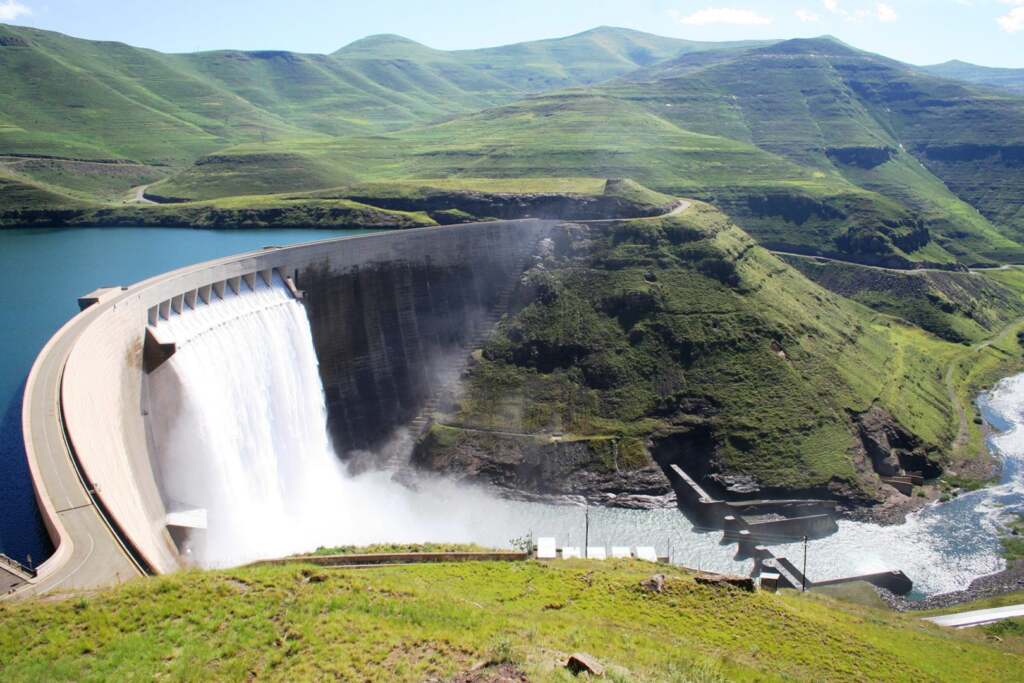Bereng Mpaki
The increased water royalties Lesotho received from South Africa during the first quarter of 2024 have significantly bolstered the country’s financial position.
In anticipation of the planned six-month outage of water transfer to South Africa, the Lesotho Highlands Development Authority (LHDA) has in recent months been increasing the monthly water quantities for transfer to the neighbouring country.
The water transfer is scheduled for a temporary shutdown from October 2024 to March 2025 to make way for major maintenance works on the delivery infrastructure.
But more water transfer means more water royalties to Lesotho, as per the Lesotho Highlands Water Project (LHWP) treaty signed between Lesotho and South Africa. And as it turned out, the increased water transfer has augured well for the country’s financial standing.
Data from the Central Bank of Lesotho (CBL), shows that the country’s stock of foreign currency reserves increased from M15.04 billion in the last quarter of 2023 to M15.20 billion in the first quarter of 2024, boosted by the increased water royalties received during the three opening months of 2024.
Foreign reserves, often referred to as foreign exchange reserves or forex reserves, are a collection of foreign currencies and other assets held by a country’s central bank or monetary authority.
Among other uses, foreign reserves are crucial for facilitating international transactions such as purchasing goods from outside of the country.
“The external sector position improved in the first quarter of 2024 due to higher water royalties. Consequently, the level of foreign reserves increased from M15.04 billion in the fourth quarter of 2023 to M15.20 billion in the first quarter of 2024,” said the CBL Governor, Dr Maluke Letete following the bank’s Monetary Policy Committee (MPC) meeting this week.
“The net international reserves (NIR) outlook is also expected to remain robust bolstered by increased water royalties and SACU receipts,” he added.
Lesotho received M298.3 million, M283.6 million, and M292.2 million from January to March 2024 in water royalties from South Africa as per the data from the LHDA. This was a result of significant increases in the amounts of transferred water to South Africa.
In contrast, the water royalties Lesotho received in the last quarter of 2023 were M161.9 million, M114.6 million, and M114.9 million for October, November, and December 2023, respectively.
Despite the notable boost from the water royalties, Lesotho’s economic activity slowed down during the period under review, in comparison with the last quarter of 2023 due to a weaker consumer demand and a slowdown in the manufacturing sub-sector.
Letete indicated, however, that Lesotho’s growth outlook is expected to maintain a moderate growth path over the medium term at an average of two percent.
“Domestic economic activity slowed down in the first quarter of 2024 from a stronger expansion in the preceding quarter. This mainly reflected weak consumer demand coupled with the slowdown in the manufacturing and production sub-sector. Although the financial sector experienced moderate growth, overall growth was dampened by a contraction in construction activity. Lesotho’s growth outlook is expected to maintain a moderate growth path over the medium term at an average of 2.0 percent,” Letete said.
He said the domestic headline inflation fell to 7.1 percent in April from 7.4 percent in March 2024, despite some price increases influenced by bad weather conditions in the region and currency depreciation during the quarter.
“This mainly reflected the winding down of the price effect of taxes on alcohol and tobacco introduced in March 2023 as well as the falling cost of building materials. Nonetheless, prices of food, energy, restaurants, and hotels moderated the fall in the inflation rate. The major drivers of the increased price pressures were adverse weather conditions in Southern Africa which negatively affected food prices, weak exchange rate and strong global demand for oil.”
During its meeting, the MPC has meanwhile decided to decrease the NIR target to US$760 million from US$770 million. At this level, the NIR target is deemed sufficient to maintain a one-to-one exchange rate peg between the Loti and the Rand. The MPC also left the CBL rate unchanged at 7.75 percent per annum.
“In summary, global growth is expected to pick up in 2024 with risks to the outlook. The domestic economy continued to remain weak while inflationary pressures were abating. However, expected adverse weather shocks and weak exchange rates are expected to negatively affect the inflation outlook. The NIR position is expected to maintain a robust position due to the water royalties windfall,” Letete concluded.




